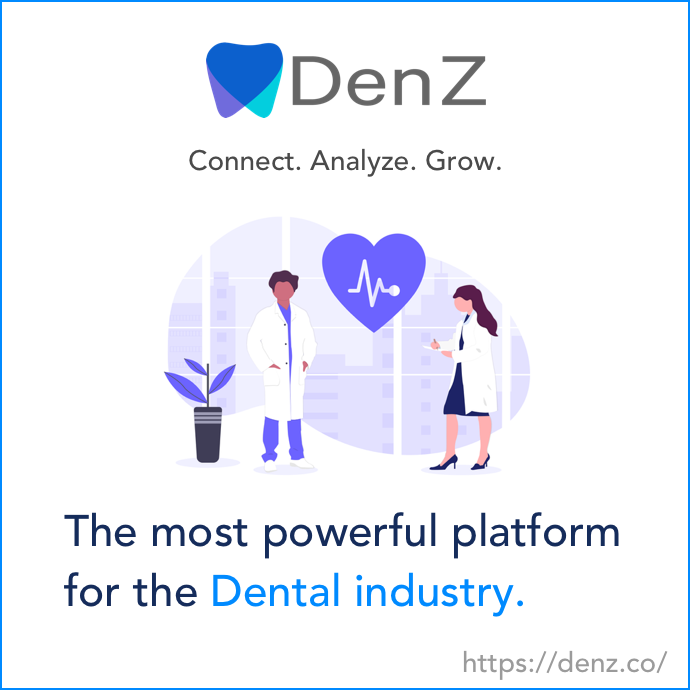Retrieval-Augmented Generation (RAG) is a machine learning framework that combines the advantages of both retrieval-based and generation-based models. The RAG framework is highly regarded for its ability to handle large amounts of information and produce coherent, contextually accurate responses. It leverages external data sources by retrieving relevant documents or facts and then generating an answer or output based on the retrieved information and the user query. This blend of retrieval and generation leads to better-informed outputs that are more accurate and comprehensive than models that rely solely on generation.
The evolution of RAG has led to various types and approaches, each designed to address specific challenges or leverage particular advantages in different domains. Let’s explore nine variations of the RAG framework: Standard RAG, Corrective RAG, Speculative RAG, Fusion RAG, Agentic RAG, Self RAG, Graph RAG, Modular RAG, and RadioRAG. Each of these approaches uniquely optimizes the efficiency and accuracy of the retrieval-augmented generation process.
Standard RAG
The Standard RAG framework is the foundational model of Retrieval-Augmented Generation. It relies on a two-step process: The model first retrieves relevant information from a large external dataset, such as a knowledge base or a document repository, and then generates a response using a language model. The retrieved documents serve as additional context to the input query, enhancing the language model’s capacity to create accurate and informative answers.
Standard RAG is particularly useful when the query requires precise and factual information. For instance, the retrieval component pulls relevant sections from the dataset in question-answering systems or tasks that summarize large documents. At the same time, the generation model synthesizes the information into coherent output.
Despite its versatility, Standard RAG could be more flawless. The retrieval step sometimes fails to identify the most relevant documents, leading to suboptimal or incorrect responses. However, by continually refining the retrieval mechanisms and underlying language models, Standard RAG remains one of the most widely used RAG architectures in academia and industry.
Corrective RAG
The Corrective RAG model builds upon Standard RAG’s foundations but adds a layer designed to correct potential errors or inconsistencies in the generated response. After the retrieval and generation stages, a corrective mechanism is employed to verify the accuracy of the generated output. This correction can involve further consultation of the retrieved documents, fine-tuning the language model, or implementing feedback loops where the model self-assesses its output against factual data.
Corrective RAG is especially useful in highly precise domains, like medical diagnosis, legal advice, or scientific research. In these areas, any inaccuracies can have significant consequences; therefore, the additional corrective layer safeguards against misinformation. By refining the generation stage and ensuring that the output aligns with the most reliable sources, Corrective RAG enhances trust in the model’s responses.
Speculative RAG
Speculative RAG takes a different approach by encouraging the model to make educated guesses or speculative responses when the retrieved data is insufficient or ambiguous. This model is designed to handle scenarios where complete information may not be available, yet the system still needs to provide a useful response. The speculative aspect allows the model to generate plausible conclusions based on patterns in the retrieved data and the broader knowledge embedded in the language model.
While speculative responses may only sometimes be fully accurate, they can still provide value in decision-making processes where complete certainty is not required. For example, in exploratory research or initial consultations in finance, marketing, or product development, Speculative RAG offers potential solutions or insights to guide further investigation or refinement. However, one of the main challenges with Speculative RAG is ensuring that users know the speculative nature of the responses. Since the model is designed to generate hypotheses rather than factual conclusions, the speculative nature must be communicated clearly to avoid misleading users.
Fusion RAG
Fusion RAG is an advanced model that merges information from multiple sources or perspectives to create a synthesized response. This approach is particularly useful when different datasets or documents offer complementary or contrasting information. Fusion RAG retrieves data from several sources and then uses the generation model to integrate these diverse inputs into a cohesive, well-rounded output.
This model is beneficial in complex decision-making processes, such as business strategy or policy formulation, where different viewpoints and datasets must be considered. By incorporating data from various sources, Fusion RAG ensures that the final output is comprehensive and multi-faceted, addressing potential biases from relying on a single dataset. One of the key challenges with Fusion RAG is the risk of information overload or conflicting data points. The model needs to balance and reconcile diverse inputs without compromising the coherence or accuracy of the generated output.
Agentic RAG
Agentic RAG introduces autonomy into the RAG framework by allowing the model to act more independently in determining what information is needed and how to retrieve it. Unlike traditional RAG models, which are typically limited to predefined retrieval mechanisms, Agentic RAG incorporates a decision-making component that enables the system to identify additional sources, prioritize different types of information, or even initiate new queries based on the user’s input.
This autonomous behavior makes Agentic RAG particularly useful in dynamic environments where the required information may evolve, or the retrieval process needs to adapt to new contexts. Examples of its application can be found in autonomous research systems, customer service bots, and intelligent assistants that need to handle evolving or unpredictable queries. One challenge with Agentic RAG is ensuring that the autonomous retrieval and generation processes align with the user’s objectives. Overly autonomous systems may stray too far from the intended task or provide irrelevant information to the original query.
Self RAG
Self RAG is a more reflective variation of the model that emphasizes the system’s ability to evaluate its performance. In Self-RAG, the model generates answers based on retrieved data and assesses the quality of its responses. This self-evaluation can occur through internal feedback loops, where the model checks the consistency of its output against the retrieved documents, or through external feedback mechanisms, such as user ratings or corrections.
Self-RAG is particularly relevant in educational and training applications, where continuous improvement and accuracy are essential. For example, in systems designed to assist with tutoring or automated learning, self-RAG allows the model to identify areas where its responses might be lacking and adjust its retrieval or generation strategies accordingly.
A major challenge with Self RAG is that the model’s ability to self-evaluate depends on the accuracy and comprehensiveness of the retrieved documents. If the retrieval process returns incomplete or incorrect data, the self-evaluation mechanisms may reinforce these inaccuracies.
Graph RAG
Graph RAG incorporates graph-based data structures into the retrieval process, allowing the model to retrieve and organize information based on entity relationships. It is particularly useful in contexts where the data structure is crucial for understanding, such as knowledge graphs, social networks, or semantic web applications.
By leveraging graphs, the model can retrieve isolated information and their connections. For example, in a legal context, Graph RAG could retrieve relevant case law and the precedents that connect those cases, providing a more nuanced understanding of the topic.
Graph RAG excels in domains that require deep relational understanding, such as biological research, where understanding the relationships between genes, proteins, and diseases is crucial. One of the main challenges with Graph RAG is ensuring that the graph structures are updated and maintained accurately, as outdated or incomplete graphs could lead to incorrect or incomplete responses.
Modular RAG
Modular RAG takes a more flexible and customizable approach by breaking the retrieval and generation components into separate, independently optimized modules. Each module can be fine-tuned or replaced depending on the specific task. For instance, different retrieval engines could be used for different datasets or domains, while the generative model could be tailored for particular types of responses (e.g., factual, speculative, or creative).
This modularity allows Modular RAG to be highly adaptable, making it suitable for various applications. For example, in a hybrid customer support system, one module might focus on retrieving information from a technical manual, while another could retrieve FAQs. The generation module would then tailor the response to the specific query type, ensuring that technical queries receive detailed, factual answers. At the same time, more general inquiries are met with broader, user-friendly responses. The key advantage of Modular RAG lies in its flexibility, which enables users to customize each system component to suit their specific needs. However, ensuring that the various modules work seamlessly together can be challenging, particularly when dealing with highly specialized retrieval systems or combining different generative models.
RadioRAG
RadioRAG is a specialized implementation of RAG developed to address the challenges of integrating real-time, domain-specific information into LLMs for radiology. Traditional LLMs, while powerful, are often limited by their static training data, which can lead to outdated or inaccurate responses, particularly in dynamic fields like medicine. RadioRAG mitigates this limitation by retrieving up-to-date information from authoritative radiological sources in real-time, enhancing the accuracy & relevance of the model’s responses. Unlike previous RAG systems that relied on pre-assembled, static databases, RadioRAG actively pulls data from online radiology databases, allowing it to respond with context-specific, real-time information.
RadioRAG has been rigorously tested using a dedicated dataset, RadioQA, composed of radiologic questions from various subspecialties, including breast imaging and emergency radiology. By retrieving precise radiological information in real time, RadioRAG enhances the diagnostic capabilities of LLMs, particularly in scenarios where detailed and current medical knowledge is crucial. Its performance across multiple LLMs, such as GPT-3.5-turbo, GPT-4, and others, has significantly improved diagnostic accuracy, with some models experiencing up to 54% relative accuracy gains. These results underscore the potential of RadioRAG to revolutionize AI-assisted medical diagnostics by providing LLMs with dynamic access to reliable, authoritative data, leading to more informed and accurate radiological insights.
Conclusion
Each variation of the Retrieval-Augmented Generation serves a unique purpose, catering to different needs & challenges across various domains. Standard RAG remains the foundation for most applications. In contrast, more specialized models like Corrective RAG, Speculative RAG, Fusion RAG, Agentic RAG, Self RAG, Graph RAG, Modular RAG, and RadioRAG offer enhancements tailored to specific requirements. As these models evolve, they can transform industries by providing more accurate, insightful, and contextually relevant information, further bridging the gap between data retrieval and intelligent decision-making.
Sources
Sana Hassan, a consulting intern at Marktechpost and dual-degree student at IIT Madras, is passionate about applying technology and AI to address real-world challenges. With a keen interest in solving practical problems, he brings a fresh perspective to the intersection of AI and real-life solutions.
Credit: Source link







































